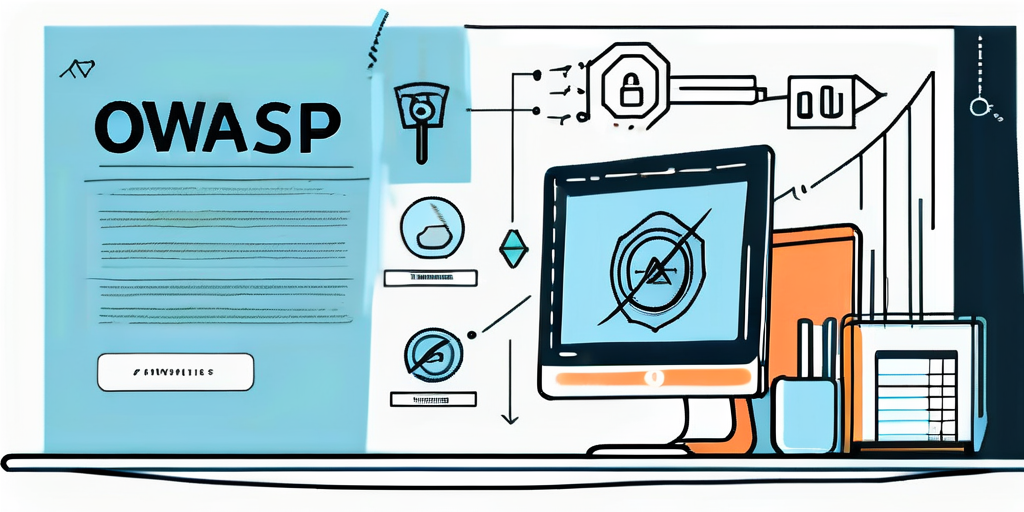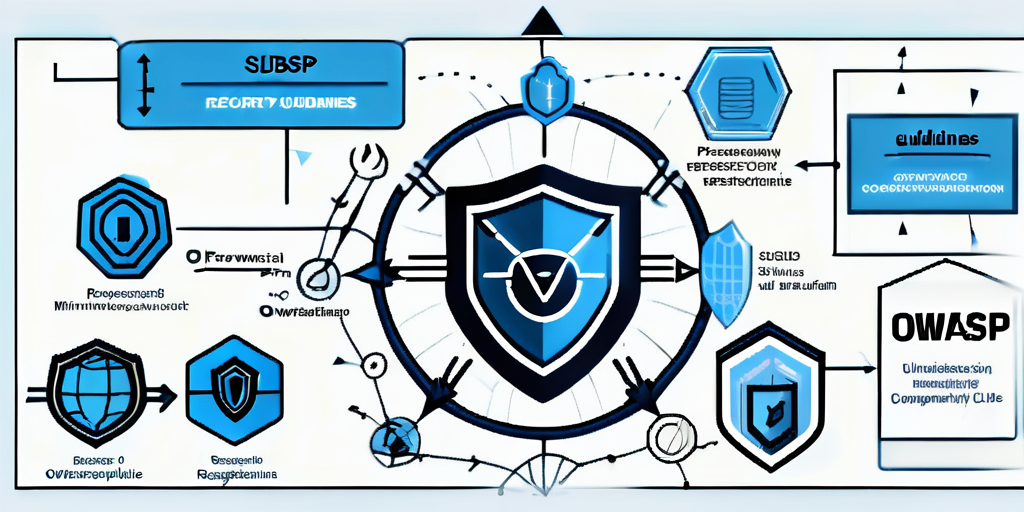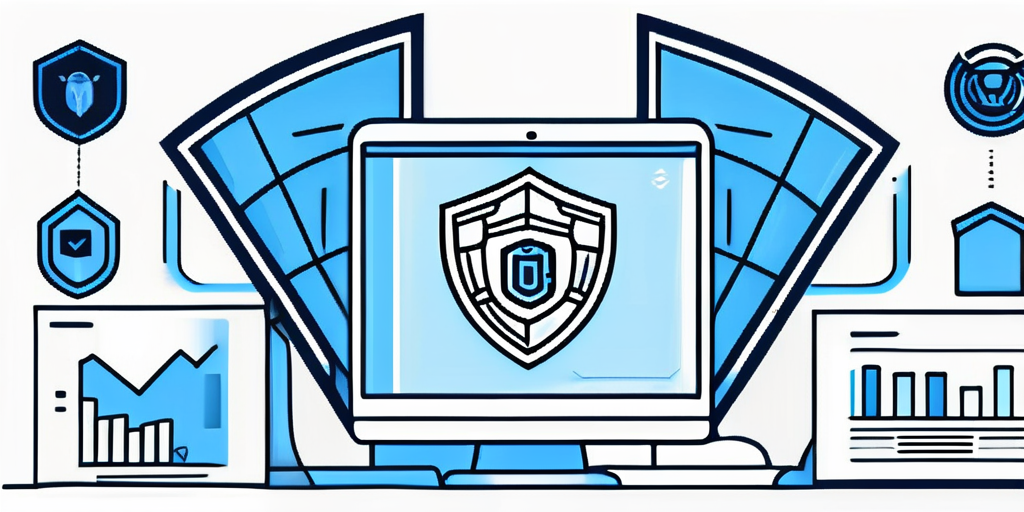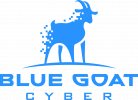In today’s digital landscape, cybersecurity has become a critical concern for organizations of all sizes. The threat of cyber attacks looms large, and it is essential for businesses to prioritize the protection of their digital assets. One valuable resource in this endeavor is OWASP (Open Web Application Security Project), an open-source community focused on web application security. This article aims to provide a comprehensive guide to OWASP, explaining its basics, key components, and its role in secure development. So, let’s dive in!
Understanding the Basics of OWASP
Before delving into the intricacies of OWASP, it is important to have a clear understanding of what it actually is. OWASP, established in 2001, is a worldwide not-for-profit organization with a mission to make software security more visible and accessible. The community is composed of software professionals, security experts, and enthusiasts who collaborate to provide guidelines, tools, and resources to help organizations improve the security of their web applications.

What is OWASP?
OWASP, as previously mentioned, stands for Open Web Application Security Project. It is a globally recognized community-driven initiative that focuses on improving the security of web applications. The project operates under the principles of openness, integrity, and innovation, with a goal to make security continuously emphasized throughout the entire software development life cycle.
OWASP is not just limited to a single tool or framework; rather, it encompasses a wide range of resources and initiatives. These include documentation, code samples, testing tools, and security standards. By providing a comprehensive set of resources, OWASP enables developers to adopt secure coding practices and build robust applications that can withstand various cyber threats.
One of the key aspects of OWASP is its emphasis on community involvement. The organization encourages developers, security professionals, and researchers to actively participate in the community by contributing their knowledge and expertise. This collaborative approach ensures that the best practices and techniques shared within the OWASP community are up-to-date and relevant to the evolving threat landscape.
The Importance of OWASP in Cybersecurity
In an era where cyber threats are increasingly sophisticated, a proactive approach to web application security is crucial. OWASP plays a vital role in promoting awareness and highlighting the significance of incorporating security measures early in the software development process.
OWASP provides developers with a wealth of resources and guidelines to help them identify and mitigate vulnerabilities in their applications. By following the best practices outlined by OWASP, developers can minimize the risk of common security flaws such as cross-site scripting (XSS), SQL injection, and insecure direct object references.
Furthermore, OWASP promotes the use of secure coding practices, such as input validation, output encoding, and proper session management. These practices protect the application from potential attacks and safeguard sensitive user data, ensuring compliance with privacy regulations.
Another significant contribution of OWASP is its focus on education and training. The organization conducts workshops, conferences, and training sessions to educate developers and security professionals about the latest trends and techniques in web application security. By staying updated with the latest security practices, developers can stay one step ahead of cybercriminals and build more resilient applications.
Overall, OWASP serves as a valuable resource for organizations and individuals looking to enhance the security of their web applications. By leveraging the knowledge and tools provided by OWASP, developers can build applications that are more resistant to attacks, thereby safeguarding sensitive data and maintaining the trust of their users.
Key Components of OWASP
Now that we have a solid foundation on OWASP and its purpose, let us explore its key components that contribute to enhancing web application security.

OWASP Top 10
The OWASP Top 10 is arguably the most well-known publication by OWASP. It is a regularly updated document that outlines the ten most critical web application security risks. The list serves as a practical guide for developers, security testers, and practitioners to understand the common vulnerabilities and how to address them effectively.
Each risk identified in the OWASP Top 10 is accompanied by a detailed explanation, examples of how the vulnerability can be exploited, and recommended countermeasures. This comprehensive approach ensures that developers have a clear understanding of the risks they need to mitigate and the steps they can take to protect their applications.
Furthermore, the OWASP Top 10 is widely adopted by organizations as a benchmark for evaluating the security posture of their web applications. It provides a common language and framework for discussing and addressing security vulnerabilities, enabling teams to prioritize their efforts and allocate resources effectively.
OWASP Testing Guide
The OWASP Testing Guide is a comprehensive manual that provides instructions and methodologies for testing the security of web applications. It covers a wide range of topics, including information gathering, vulnerability identification, and security testing techniques.
Within the OWASP Testing Guide, various testing methodologies are outlined, such as black-box testing, white-box testing, and gray-box testing. Each methodology is explained in detail, along with the tools and techniques that can be utilized to perform effective security testing.
By following the guidelines provided in the OWASP Testing Guide, organizations can conduct thorough and systematic security assessments of their web applications. This enables them to identify potential vulnerabilities and weaknesses, allowing for timely remediation and strengthening of their overall security posture.
OWASP Code Review Guide
The OWASP Code Review Guide emphasizes the significance of secure coding practices. It equips developers with the necessary knowledge and techniques to identify and remediate vulnerabilities in their code.
The guide provides a comprehensive overview of common coding vulnerabilities, such as injection attacks, cross-site scripting (XSS), and insecure direct object references. It explains how these vulnerabilities can be exploited and offers detailed recommendations on how to prevent them.
By incorporating secure coding principles from the early stages of development, organizations can significantly reduce the likelihood of introducing security weaknesses into their applications. The OWASP Code Review Guide serves as a valuable resource for developers, enabling them to write secure code and contribute to the overall security of their applications.
In conclusion, the key components of OWASP, including the OWASP Top 10, OWASP Testing Guide, and OWASP Code Review Guide, play a crucial role in enhancing web application security. These resources provide developers, security testers, and practitioners with the knowledge and tools they need to identify and mitigate common vulnerabilities, ultimately leading to more secure web applications.
Getting Started with OWASP
Now that you have gained insight into the key components of OWASP, it’s time to explore practical ways to incorporate OWASP into your security strategy.
When it comes to web application security, OWASP offers a wealth of resources and tools that can greatly enhance your security posture. By leveraging these tools effectively, you can identify vulnerabilities, automate security checks, and strengthen the defense mechanisms of your web applications.
How to Use OWASP Tools
OWASP provides a range of tools that are instrumental in assessing and improving web application security. Let’s take a closer look at some of these tools:
1. Vulnerability Scanners: OWASP offers powerful vulnerability scanners that can automatically scan your web applications for common security weaknesses. These scanners can help you identify vulnerabilities such as SQL injection, cross-site scripting (XSS), and insecure direct object references.
2. Secure Coding Libraries: OWASP provides secure coding libraries that offer developers a set of best practices and guidelines to follow when writing secure code. These libraries can help prevent common security vulnerabilities by providing secure coding patterns and functions.
3. Web Application Firewalls (WAFs): OWASP also offers WAFs that can be deployed in front of your web applications to provide an additional layer of protection. These WAFs can help detect and block malicious traffic, preventing attacks such as SQL injection, cross-site scripting, and remote file inclusion.
By incorporating these OWASP tools into your security strategy, you can significantly enhance the security of your web applications and protect them from potential threats.
Implementing OWASP in Your Security Strategy
Integrating OWASP into your security strategy involves several crucial steps. Let’s explore these steps in more detail:
1. Raising Awareness: The first step is to raise awareness among stakeholders about the significance of web application security. This includes educating management, developers, and other relevant personnel about the potential risks and consequences of insecure web applications.
2. Incorporating Best Practices: To effectively implement OWASP, it is important to incorporate OWASP best practices into your software development life cycle (SDLC). This includes following secure coding guidelines, performing regular security code reviews, and conducting thorough security testing throughout the development process.
3. Regular Security Assessments: It is crucial to conduct regular security assessments of your web applications to identify vulnerabilities and weaknesses. This can be done through manual penetration testing, automated vulnerability scanning, and code reviews. By regularly assessing the security of your applications, you can proactively address any issues and ensure a strong security posture.
4. Promoting Security Awareness: Lastly, it is important to promote a culture of security awareness among your development team and other stakeholders. This includes providing security training, conducting awareness campaigns, and fostering a mindset of security-first approach in all aspects of web application development and maintenance.
By following these steps and incorporating OWASP into your security strategy, you can establish a robust security posture for your web applications, effectively mitigating potential risks and ensuring the protection of sensitive data.
The Role of OWASP in Secure Development
Secure coding practices and web application security go hand in hand. Let us explore how OWASP contributes to secure development.

Secure Coding with OWASP
OWASP, the Open Web Application Security Project, is a non-profit organization dedicated to improving the security of software. Through its various resources and guidelines, OWASP helps developers adopt secure coding practices. By following OWASP recommendations, developers can write code that is resistant to common vulnerabilities, such as Cross-Site Scripting (XSS) and SQL Injection.
One of the key resources provided by OWASP is the OWASP Top Ten Project, which lists the top ten most critical web application security risks. This project serves as a guide for developers, highlighting the vulnerabilities that they should be aware of and providing recommendations on how to mitigate them. By incorporating these recommendations into their coding practices, developers can significantly enhance the security of their applications.
OWASP also offers a wide range of tools and libraries that developers can use to improve the security of their applications. These tools help developers identify and fix security vulnerabilities during the development process, reducing the risk of security breaches in production.
OWASP and Application Security
OWASP places significant emphasis on application security, striving to make it an integral part of software development. By incorporating OWASP principles and practices, organizations can ensure that their applications are better protected against evolving security threats.
One of the key initiatives of OWASP is the development of secure coding guidelines. These guidelines provide developers with best practices for writing secure code, covering topics such as input validation, output encoding, and access control. By following these guidelines, developers can minimize the risk of introducing security vulnerabilities into their applications.
OWASP also promotes the use of secure development frameworks and libraries. These frameworks and libraries are designed with security in mind, providing developers with pre-built components that have been thoroughly tested for security vulnerabilities. By leveraging these secure development frameworks and libraries, developers can save time and effort in implementing secure coding practices.
Furthermore, OWASP organizes conferences, training programs, and community events to promote knowledge sharing and collaboration among developers, security professionals, and researchers. These events provide a platform for discussing the latest trends and challenges in application security, fostering a community of practitioners who are committed to improving the security of their applications.
In conclusion, OWASP plays a crucial role in secure development by providing developers with resources, guidelines, tools, and a supportive community. By embracing OWASP’s principles and practices, developers can enhance the security of their applications and protect them against evolving security threats.
Future of OWASP
As the digital landscape continues to evolve, OWASP is at the forefront of adapting to emerging trends and challenges in web application security.
With the rapid advancement of technology, the threat landscape is constantly evolving. Cybercriminals are becoming more sophisticated, employing new techniques to exploit vulnerabilities in web applications. In response to these challenges, OWASP is committed to staying ahead of the curve and providing the necessary tools and resources to protect against emerging threats.
One of the key areas of focus for OWASP is the development of new security standards and guidelines. By collaborating with industry experts and security professionals, OWASP aims to create comprehensive frameworks that address the ever-changing security landscape. These frameworks help developers build secure applications and provide a roadmap for organizations to assess and improve their overall security posture.
Upcoming Changes in OWASP
OWASP remains dynamic, continuously evolving to address the evolving nature of security threats. It is essential to stay updated with OWASP’s latest releases, projects, and guidelines to ensure the efficacy of your security initiatives.
In the coming months, OWASP has several exciting initiatives in the pipeline. One of the key areas of focus is the development of new tools and technologies to automate security testing and vulnerability assessments. These tools will enable developers to identify and remediate security issues more efficiently, saving time and resources.
Additionally, OWASP is actively working on expanding its training and educational resources. With the aim of empowering developers and security professionals, OWASP is developing comprehensive training programs and workshops that cover a wide range of security topics. These resources will equip individuals with the knowledge and skills necessary to build secure applications from the ground up.
Staying Updated with OWASP Developments
OWASP has a vibrant and active community that encourages participation and knowledge-sharing. By joining the community and engaging in discussions, professionals can stay up to date with the latest developments and contribute to the improvement of web application security.
One of the best ways to stay updated with OWASP developments is by attending OWASP conferences and events. These gatherings bring together industry experts, researchers, and practitioners to share their insights and experiences. Attending these events provides an opportunity to learn from the best in the field and allows for networking and collaboration with like-minded individuals.
Furthermore, OWASP maintains an extensive online presence, with a wealth of resources available on their website. From documentation and guidelines to open-source projects and research papers, OWASP’s website is a treasure trove of information for anyone interested in web application security.
In conclusion, OWASP represents a valuable resource for individuals and organizations aiming to enhance web application security. By leveraging its guidelines, tools, and community, developers can build more secure applications, safeguarding sensitive data and ensuring a safer digital environment for everyone.
If you’re looking to elevate your organization’s cybersecurity posture, especially in medical device security, HIPAA, FDA compliance, or need thorough penetration testing services, Blue Goat Cyber is your go-to partner. As a Veteran-Owned business, we’re dedicated to securing your operations against cyber threats with our specialized B2B cybersecurity services. Don’t leave your security to chance. Contact us today for cybersecurity help!


